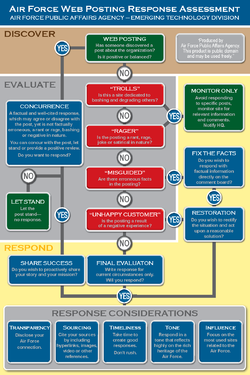“if we had more staff we would..
…engage better on social media!”
…create more content!”
…serve more clients!”
…analyze metrics and segment audiences!”
Yeah, yeah, yeah. We have all sat in breakout sessions where there are countless good ideas, perfect strategies and amazing resources. But there is always that group of people mumbling or outright yelling, we can’t do that, We DON’T have ENOUGH STAFF. Blah, blah, blah.
First, a big shout out to Kivi for an article that inspired my post! You should read it! Kivi always has terrific resources and her blog post on this topic is much richer in content. I hope I didn't overlap content too much. Some of our examples are similar, but I tried to come from the tech side.
While I will immediately acknowledge that many (if not all) nonprofits are under resourced, I do not think adding staff always solves problems. More staff = more politics, more management, more red tape, more, more, more, then you need more staff because you have more staff.
I think many of our challenges could be solved if we used a more important resource better, time. If we start to value each staff person’s time more than adding more staff, we may just solve some of the issues leading to the need for more staff.
Example 1: We need more staff to engage better on social media.
You can interpret this statement a few different ways. We don’t have a social media expert on staff, we don’t have time to manage all of those different channels, we don’t know where to start or we don’t even have a marketing staff. Whatever.What I hear: Social Media is not a big enough priority for me to make time for it.
I would argue that this is a time issue, which could be solved with planning, a volunteer (or other staff) and tech.
1. Make time to create simple content plan (better yet, start with a template from a colleague, NTEN, Idealware, TechSoup or wherever)
2. Find someone with existing experience with social media (volunteer or staff) OR learn by DOING it, just find an easy place to start, then budget time to do it. If it is a priority you will find the time.
3. USE TECH! There are so many tools like Buffer, Hootsuite, etc that are free\cheap built to help you listen, engage post.
MOTTO: Don’t work harder. Work smarter. More staff may not fix it. Find existing experience and let the tech do the work.
Example 2: We need more staff to analyze metrics and segment audiences.
What I hear: we don’t care what our audiences want to hear, we just know what we want to tell them. (maybe a little harsh, but eh.)
I would argue that this is a time issue, which could be solved with planning, a volunteer (or other staff) and tech.
1. Make time to create a simple content plan and profile of your audience needs (better yet, start with a ideas from a colleague, NTEN, Idealware, TechSoup or wherever)
2. Find someone with existing experience with metrics and segmenting (volunteer or staff) OR learn by DOING it, just find an easy place to start, then budget time to do it. If it is a priority you will find the time. (Also check out the analysis exchange, free metrics help)
3. USE TECH! This one isn’t cheap but you can solve the segmentation with Tech. Tools like Informz or Higher Ground will do the segmenting, metrics, audience profiling and so much more for you. But you do have to pay for that. BUT that expense is still cheaper than the staff it would take to do it.
MOTTO: Don’t work harder. Work smarter. More staff may not fix it. Find existing experience and let the tech do the work.
Oh, wait, did I sorta say the same thing for both examples? Weird.
Maybe that is because that is what we do, we do the same thing over and over. We have a need, we hire more staff.
Before hiring, think about:
… your process, can it be improved?
… your staff skills, can they be trained?
… your tools, can tech solve the problem?
… your strategy, are you being purposeful?
I am not trying to say we need more tech and less people. I am saying, let's think through some of the challenges we are facing and think through all of the options.














